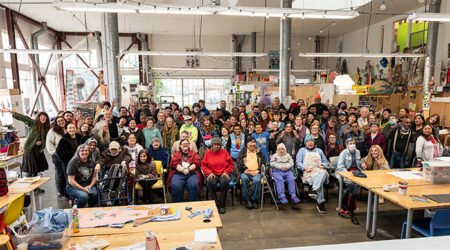Year of the Ultrabook
The Consumer Electronics Show: those of us who are early adopters of new technology, the people that like to see the shiny, new gadgets, all await the major announcements and product demonstrations that accompany the CES. All the major players such as Intel, Samsung, and Sony show up to CES touting their cool new wingdings, […]

The Consumer Electronics Show: those of us who are early adopters of new technology, the people that like to see the shiny, new gadgets, all await the major announcements and product demonstrations that accompany the CES. All the major players such as Intel, Samsung, and Sony show up to CES touting their cool new wingdings, doohickies, and other stuff that your grandpa never could have imagined. One notable name missing from the agenda: Apple, Inc. Apple has its own version of CES, albeit a much smaller one, at Moscone Center compared to the enormous extravaganza put on display in Las Vegas.
Apple seems like the company that everyone is trying to imitate. Case in point: Intel, the company that brought us blue men dancing to techno music – and also the Santa Clara based semiconductor manufacturer whose processors are found in more and more laptops these days – has pushed laptop builders on a design called the Ultrabook (a name they coined) as a direct competitor to Apple’s MacBook Air. And why not? The MacBook Air is one sexy laptop. It is really thin, has a battery life that is good for hours of continuous use, boasts a backlit keyboard, a solid state hard drive for fast computing, and just so happens to use Intel’s processors. What makes the Air so appealing is the lightweight design and relatively large 13” screen. The dimensions make the Air an ideal companion for business travelers and students who want a powerful device that they can lug around all day long. Intel’s push for more Ultrabook designs is in response to the niche that has been thus far filled by Apple.
2011 was a so-so rookie year for the Ultrabook, but 2012 will be its year to shine. We have already seen some decent entries in the Ultrabook category. The Zenbook by Asus is a beautiful machine that debuted late 2011, and proves that the computer manufacturers are committed to the Ultrabook design. It has a single-sheet aluminum case, has a higher screen resolution than the Air, and the processor and ram are the same as the Apple equivalent. This bad boy is crazy thin and looks like you could shave with it. Yet it costs about a hundred bucks less than the Air. Asus even went out and got Bang and Olufsen, the maker of super high-end audio systems, to design the sound hardware, promising a high-end experience in a compact design. If you want heads to turn at the coffee shop while you update your Facebook status, whip this baby out.
Toshiba announced the Z835 series and promises it to be the lightest of all Ultrabooks, weighing in at about 2.5lbs. That is ultra-portable! The one I got my hands on lived up to its billing. Acer, HP, and Sony all have Ultrabook designs, but the major announcements for the new models are still to come. New models are expected to be announced with specs that include the new Sandy Bridge processor from Intel, capable of handling more graphical horsepower for non-discrete graphics builds. And for those out there that thought that was too technical: the new laptops will cost less, do more, and still be thin and sexy. Yay!
Where 2011 was probably the year of the tablet, 2012 will be the year of the Ultrabook. Book it, Skip.
By Edward Burns
Edward Burns has worked in wireless retail sales for nine years, including seven years in management. He left wireless to get his English degree at U.C. Berkeley, but still loves to keep up with the happenings of wireless equipment. He is a gadget freak, builds his own computers, and is an early adopter of new technologies.





